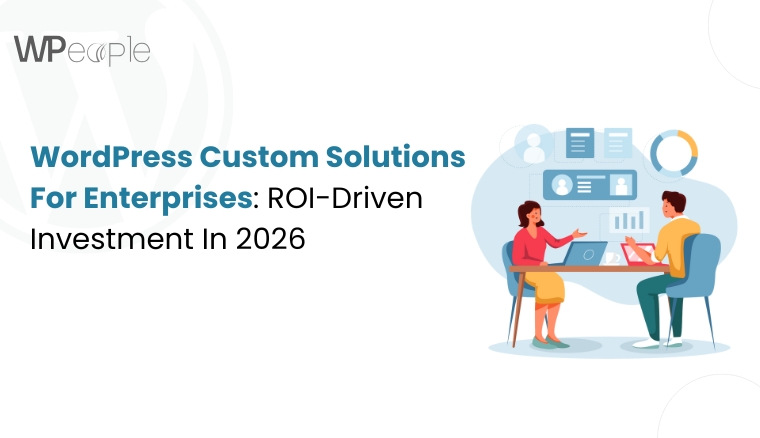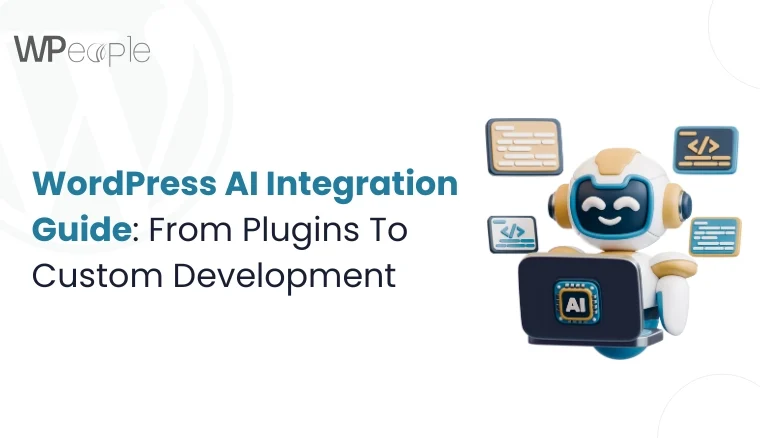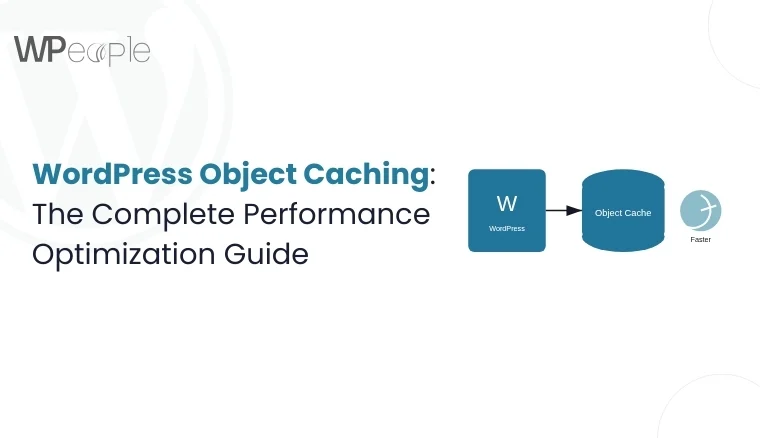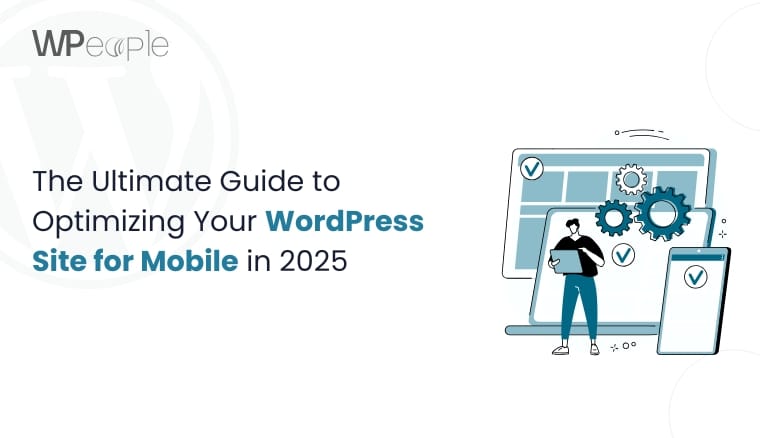
Optimizing your WordPress site for mobile is no longer just a recommendation—it’s a necessity. With over 60% of global internet traffic coming from mobile devices, ensuring your website delivers a seamless, fast, and user-friendly experience on mobile is crucial for retaining visitors and ranking well on search engines. Moreover, Google’s mobile-first indexing makes mobile optimization an essential part of any website’s SEO strategy.
This comprehensive guide will walk you through detailed strategies and best practices to optimize WordPress for mobile. Whether you’re new to website management or an experienced wordpress developer, these steps will help you improve your mobile performance and overall user experience.
Why Should You Optimize WordPress for Mobile?
Before diving into the technical details of WordPress mobile optimization, it’s important to understand the impact mobile users have on your website’s performance and growth. Today, mobile optimization isn’t just about aesthetics; it directly influences user retention, conversions, and search rankings.
Here are some key reasons why optimizing your WordPress site for mobile should be a top priority:
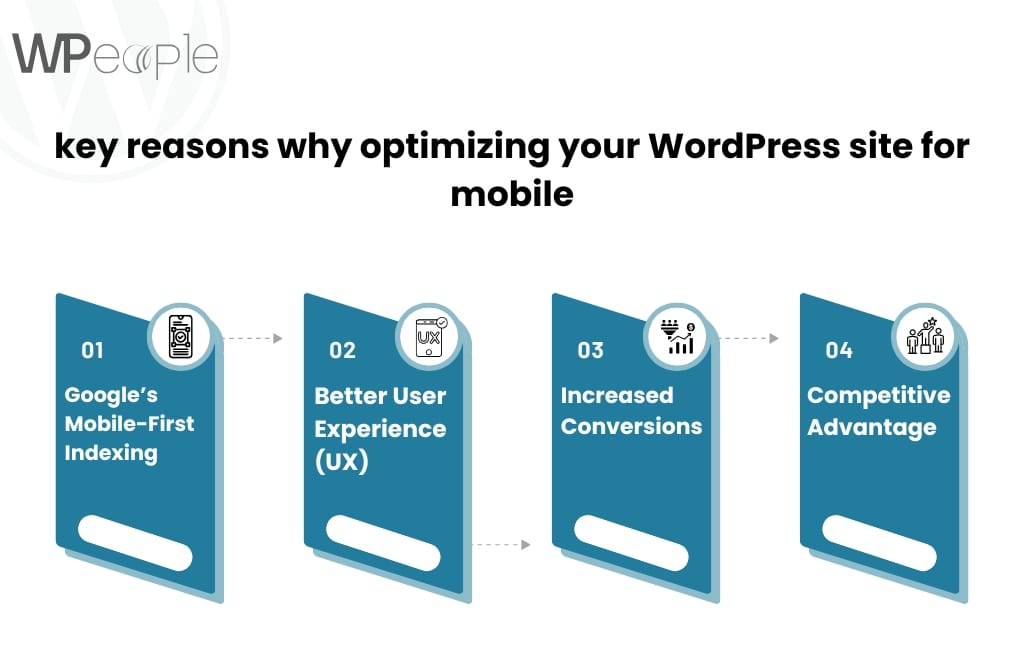
- Google’s Mobile-First Indexing: Google predominantly uses the mobile version of your site for indexing and ranking. A site that isn’t mobile-friendly will likely rank lower in search results.
- Better User Experience (UX): Mobile users expect fast, intuitive websites. Poor performance leads to high bounce rates, meaning users leave your site before interacting with your content.
- Increased Conversions: Optimizing for mobile improves not only user engagement but also conversion rates. E-commerce sites, for example, benefit from faster load times and easier navigation, leading to higher sales.
- Competitive Advantage: Many businesses still struggle to fully optimize for mobile. By staying ahead of the curve, you ensure your WordPress site is accessible to mobile users, giving you a competitive edge.
Common Reasons for Slow Mobile Performance
Slow loading times are the main culprit behind high bounce rates and poor user experiences on mobile. Several factors contribute to sluggish mobile performance:
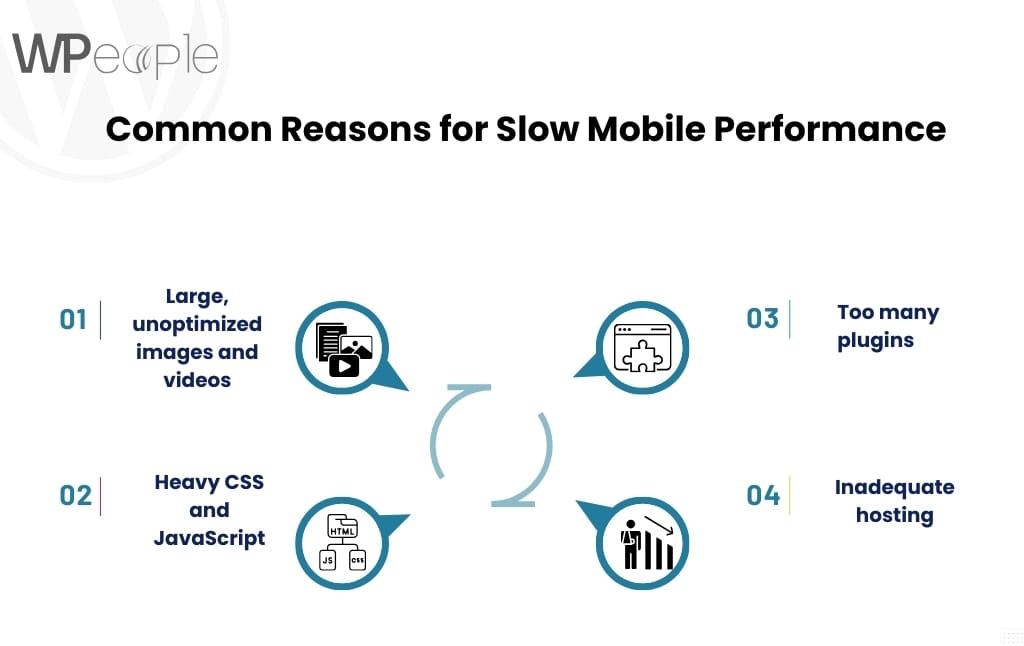
- Large, unoptimized images and videos: High-resolution images, uncompressed videos, and other media files are often the leading cause of slow loading times.
- Heavy CSS and JavaScript: Excessive use of custom CSS and JavaScript can lead to render-blocking issues, where the browser must fully load these files before displaying the content.
- Too many plugins: Running numerous or poorly optimized plugins adds unnecessary load time, affecting both desktop and mobile performance.
- Inadequate hosting: A slow hosting provider can’t handle spikes in traffic and results in slower performance, especially for mobile users in different geographic locations.
How to Check if Your WordPress Site is Mobile-friendly
Before starting the optimization process, you need to determine your current site’s mobile-friendliness and identify areas for improvement. There are several tools available to test your website’s mobile performance:
- Google’s Mobile-Friendly Test: This tool evaluates whether your site meets mobile usability standards. It identifies issues like small text, unclickable buttons, and content that exceeds screen width.
- PageSpeed Insights (by Google): Provides a detailed report on your mobile page speed. It highlights specific issues such as slow server response time, unoptimized images, and large CSS files.
- Browser Developer Tools: Use Chrome’s built-in developer tools to test how your website appears and functions on various screen sizes. You can simulate mobile devices to see how responsive your design is and where performance bottlenecks might lie.
Strategies to Optimize WordPress for Mobile Users
Once you’ve identified potential issues, you can start optimizing your WordPress site for mobile. Below are the most effective strategies to ensure your mobile visitors have a fast and smooth experience.
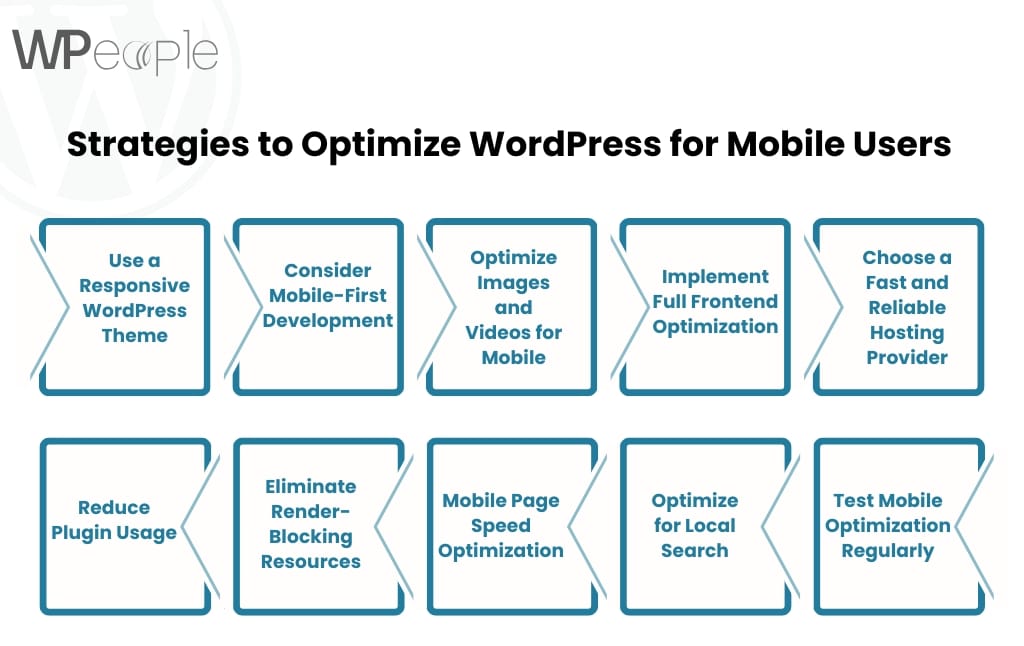
1. Use a Responsive WordPress Theme
The foundation of any mobile-friendly WordPress site starts with a responsive theme. A responsive theme adjusts the layout of your website dynamically, depending on the screen size and resolution. Here’s why it matters:
- Fluid grids: Responsive themes use fluid grids that allow page elements to resize automatically based on the device’s screen size.
- Flexible images: Images and media files resize themselves to fit smaller screens, preventing overflow or awkward cropping.
- Mobile-friendly menus: Menus adjust to mobile screens using hamburger icons or collapsible dropdowns, ensuring easy navigation on mobile devices.
When choosing a theme, ensure it’s optimized for mobile performance. WordPress themes like Astra, GeneratePress, and OceanWP are popular choices due to their lightweight code and mobile responsiveness.
2. Consider Mobile-First Development
A mobile-first design approach means building your website for mobile devices first and scaling up to accommodate larger screens. This ensures that the core user experience is seamless on mobile, which is essential for Google’s mobile-first indexing. Some mobile-first development strategies include:
- Prioritize essential content: On mobile, space is limited. Present the most important content first, such as your call-to-action (CTA), key images, or headlines.
- Simple navigation: Mobile users prefer simplicity. Use minimalistic, intuitive navigation that avoids clutter.
- Clickable elements: Make sure buttons, links, and forms are touch-friendly, with enough space between them to avoid accidental clicks.
3. Optimize Images and Videos for Mobile
Media files are one of the largest contributors to slow load times on mobile. To optimize WordPress for mobile, it’s crucial to compress and optimize your images and videos without sacrificing quality:
- Image compression: Use plugins like Smush, ShortPixel, or Imagify to automatically compress images before uploading them to your site. This reduces file sizes without affecting image quality.
- Use WebP format: WebP images are much smaller than PNG or JPEG formats but maintain high quality. You can use plugins like WebP Express to convert images to this format.
- Lazy loading: Implement lazy loading for images and videos so they only load when the user scrolls down to them. This improves initial page load time, especially on image-heavy pages.
4. Implement Full Frontend Optimization
Frontend optimization is key to ensuring fast load times on mobile devices. Here are some techniques to streamline your site’s performance:
- Minify CSS, JavaScript, and HTML: Minification reduces the size of these files by removing unnecessary characters (like spaces and line breaks). Tools like Autoptimize or WP Rocket can handle this for you.
- Defer JavaScript loading: Prevent JavaScript files from blocking the rendering of your page. Use the “defer” or “async” attribute to load these files after the page content has loaded.
- Enable Gzip compression: Compress your site’s files using Gzip to reduce page size and improve load times.
5. Choose a Fast and Reliable Hosting Provider
Your hosting provider directly impacts the speed and reliability of your site, especially for mobile users. Look for hosting providers that specialize in WordPress and offer the following features:
- Content Delivery Network (CDN): A CDN distributes your website’s content across multiple servers worldwide, allowing mobile users to load your site from the server closest to them. Cloudflare is a popular choice for CDN services.
- SSD storage: Solid State Drives (SSDs) load data faster than traditional hard drives, speeding up site performance.
- PHP 8 support: Ensure your hosting provider supports the latest version of PHP, as it offers significant performance improvements over older versions.
6. Reduce Plugin Usage
Too many plugins can slow down your website, and some plugins may not be optimized for mobile performance. Here’s how to handle plugins efficiently:
- Audit your plugins: Regularly check the performance of your active plugins using tools like P3 Plugin Performance Profiler. Deactivate or uninstall any plugins that are unnecessary or slow down your site.
- Use lightweight plugins: Opt for lightweight, well-coded plugins that won’t bog down your site. WordPress plugins like WP Rocket for caching and Imagify for image optimization are both fast and efficient.
7. Eliminate Render-Blocking Resources
Render-blocking JavaScript and CSS files delay the browser from displaying the content of your site. To avoid this:
- Inline critical CSS: Move the essential CSS that’s required for above-the-fold content directly into the HTML to prevent delays.
- Defer non-essential JavaScript: Use tools like Autoptimize to defer the loading of non-essential JavaScript files until after the page content has loaded.
8. Mobile Page Speed Optimization
Page speed is crucial for mobile users, as they’re more likely to leave a site that takes longer than three seconds to load. Here are some specific steps to optimize WordPress mobile page speed:
- Browser caching: Use caching plugins like W3 Total Cache or WP Rocket to store a static version of your site, speeding up load times for repeat visitors.
- Reduce server response time: Aim for a Time to First Byte (TTFB) of under 200ms. You can improve this by choosing a high-performance hosting provider and enabling caching.
- Optimize font delivery: Avoid loading too many font variations. Use system fonts or Google Fonts and only load the styles you need.
9. Optimize for Local Search
If you run a local business, it’s crucial to optimize WordPress for mobile with local SEO in mind. Mobile users often search for businesses “near me” or other location-based queries. Here’s how to optimize:
- Add location-based keywords: Ensure that your meta descriptions, titles, and content include local keywords.
- Use structured data: Implement schema markup for your business location to enhance visibility in local search results.
- Get listed in local directories: Ensure your business is listed on Google My Business and other relevant local directories.
10. Test Mobile Optimization Regularly
Mobile optimization isn’t a one-time task. Regularly testing your site’s mobile performance ensures you stay ahead of any issues that might arise. Here’s how:
- GTmetrix and Google Search Console: These tools help you regularly monitor your site’s performance on mobile and track any issues or improvements.
- A/B testing: Run A/B tests on different mobile layouts, features, and elements to see what works best for your audience.
Final Thoughts
Mobile optimization is an ongoing process, but the benefits are well worth the effort. By following these strategies, from choosing a responsive theme to optimizing your media and implementing caching, you’ll see improvements in mobile speed, user engagement, and search engine rankings.
Keep testing and iterating on your optimizations to ensure your site remains mobile-friendly and competitive in 2024 and beyond.
Consult with Our WordPress Experts On:
- WooCommerce Store
- Plugin Development
- Support & maintenance


